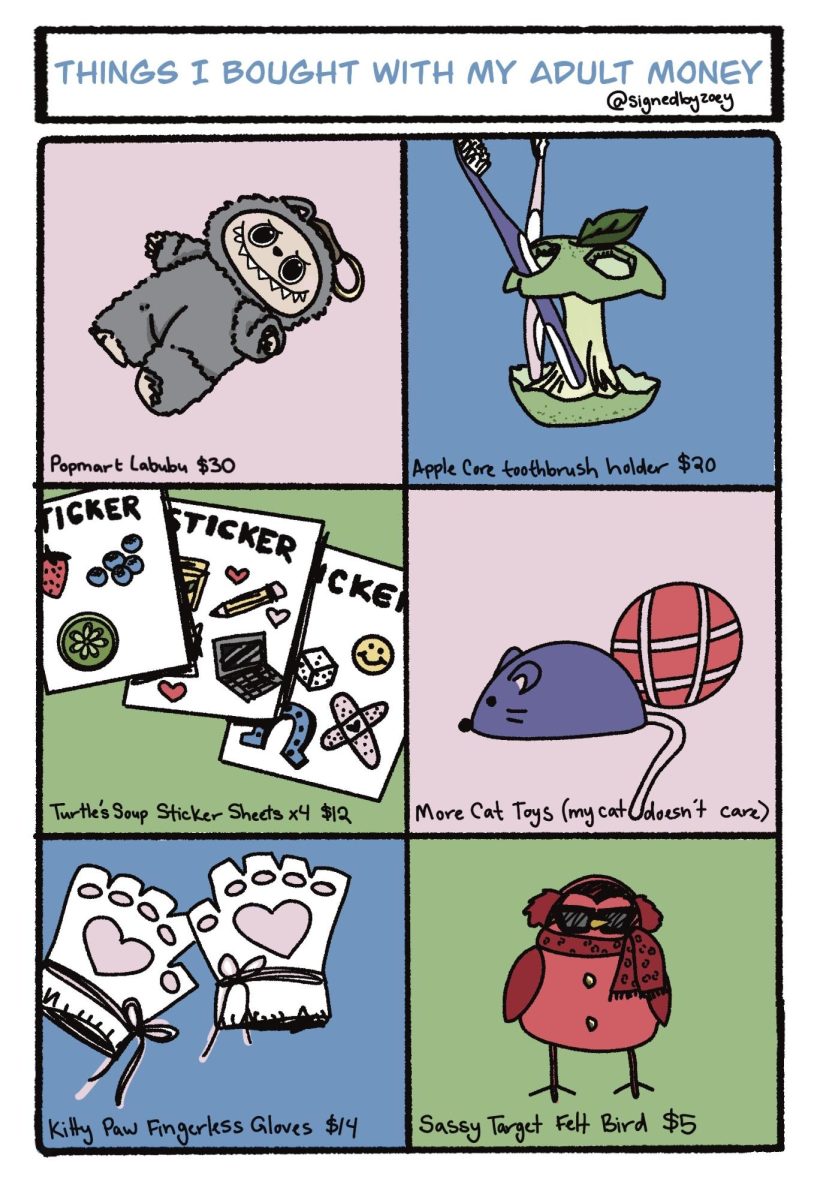Lanthorn Reviews: Biscuit TCG embodies best, worst of card game creation
Mar 16, 2020
I’ve had my hands on collectable card games for as long as I can remember. I started off with Pokemon, whose cards reminded me of my favorite characters on the shows I would watch and then eventually I moved on to refined Yu Gi Oh, with darker themes and a straightforward set of rules. As a college student, I’ve picked up Magic: The Gathering for its engaging community and draft format, and even played digitally in the Tespa Hearthstone Collegiate Championship for a few semesters.
Growing up playing established card games was always a joy, but seeing them evolve from their roots was bittersweet. Early in Yu Gi Oh and Hearthstone, cards were arbitrarily given power levels and lacked interesting synergies or abilities. To win, players build a deck that has a range of monster costs, niche spells and hopes to draw well.
Seeing all of these games grow over my years of playing and following, there is a level of depth to most cards, with interesting abilities, unique synergies and an established power level per card cost.
This all swelled to the forefront of my mind when I had the chance to play Biscuit, a new card game made by one-man-army Bob Thrasher. I’ve been following Thrasher’s art for some time now, so when I saw that he combined that with his passion of game development, I was hooked. The first version was released August 2019 and a much stronger version was released October 2019, which included more cards and rich lore.
I got my hands on three packs of 50 cards: the Abyssal, Biohazard and Stellar packs. In Biscuit, you build an army of 30 cards which include monsters and various spells. Each type of pack has its own flavor, with Abyssal focusing on ritual summoning, Biohazard focusing on balance of raw strength and power-ups and Stellar prioritizing magic and cohesion between armies.
Looking at gameplay, Biscuit plays like a lovechild of Yu Gi Oh and Hearthstone. Each turn, you collect two Summoning Points (SP) that you collect to summon your warriors. Other card games struggle with how to deal with summoning monsters (take Magic’s difficulty of being short on lands every draw), but Biscuit has a nice take on it. SP becomes a resource, forcing you to spend it rapidly to develop a meek wall of minions or save it for a behemoth play.
When I got my hands on the game, I was most excited for the artwork, which did not disappoint. Thrasher’s art style is unique, and if I were to draw a comparison, it would be similar to Jeffery Thompson’s “Rick and Morty” design. There are bold colors, bulbous shapes and cartoony charm. If you like your art a little weird, but still a bit badass, this will float your boat.
I also felt that some of the decks had some really clear themes and directions. Abyssal feels incredibly satisfying when you sacrifice a chunk of your health to summon an eldritch god. Biohazard has some raw strength, but little buffs turn even harmless creatures into tanks. Stellar felt the least put together, with its gimmick being able to better blend card types. Especially early on, I found this pretty ineffective and difficult to use.
The gameplay itself was a double-edged sword. Playing with card game novices, it took a bit to understand the vague rule card provided, but when those wrinkles were sorted out, there was a lot of dynamic gameplay. Because of SP management, there are usually several game-swinging plays, which is exciting. Once I started tracking SP more closely (using a 10-sided die helped), the game felt smooth.
But the veteran inside of me was a bit conflicted. As is the issue with a lot of early card games, the power level is not set in stone, which immediately cut some cards from my deck. At the same SP cost, some cards had a net attack/defense of several hundred points over others.
Some cards also have incredibly strong abilities that make them far outclass, such as one that can warp around your opponent’s battlefield to deal damage directly to their health totals. Being able to flood your field with cultists through the Abyssal deck is a lot of power very quickly if you draw well. Being able to do so randomly feels great for the player, but incredibly disheartening for the opponent.
With a lot of indie card games, if you play early enough, you’ll get them in states like Biscuit is in. But that’s far from a bad thing.
The questions, goofy interactions and fun art made the game feel playful, which is exactly what you want in something like this. While I certainly see some potential for growth in Biscuit, at this point, I’ll happily take it for the imperfect beauty it is.


























